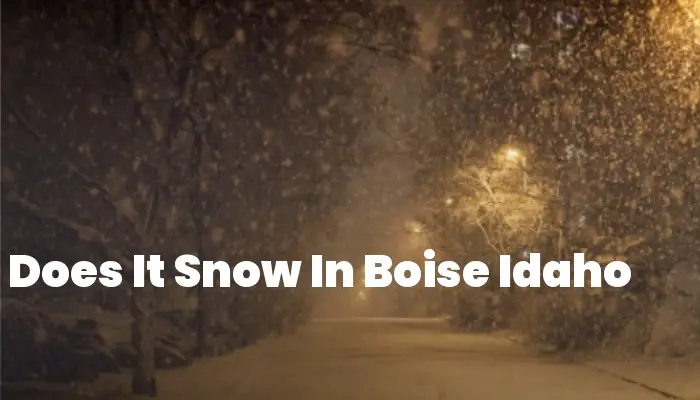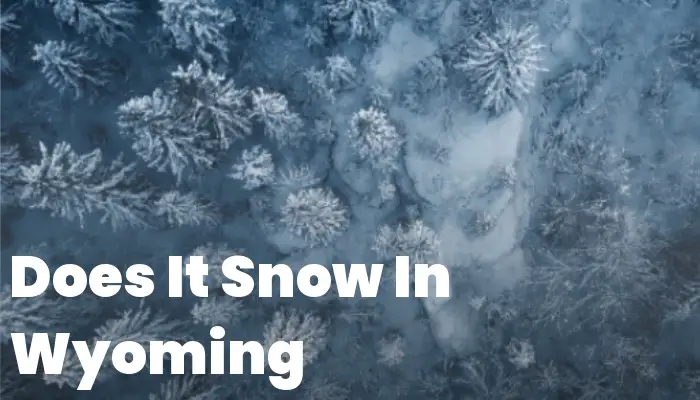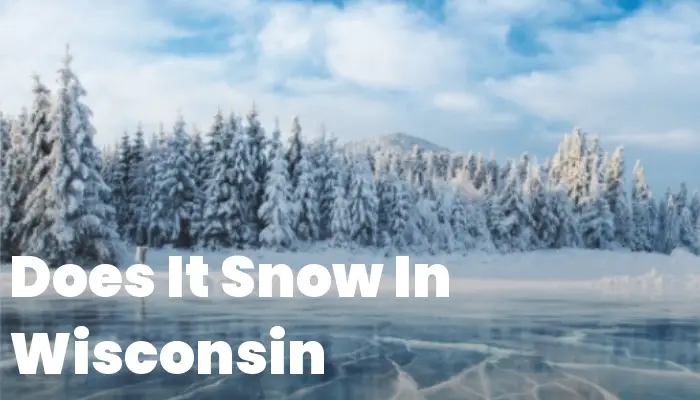Are you curious about the winter weather conditions in the Gem State’s capital, and finding yourself often asking, “Does it snow in Boise Idaho?”
If so, prepare to explore an enlightening journey through Boise’s winter climate trends and patterns.
This article will provide detailed insights on what to expect when it comes to snowfall in this region during its frosty months. From average snowfall amounts to the coldest times of year, we’ve got everything you need to understand about Boise’s winter wonderland.
Does It Snow In Boise Idaho?
If you’re pondering the likelihood of a wintery blanket covering the city of Boise, the answer is a resounding Yes. Located in the Northwestern United States, Boise experiences all four seasons, including a distinct winter period. While not as snowy as some of its northern neighbors or mountainous counterparts, Boise sees its fair share of snow throughout the colder months. The city’s geographical position within the Treasure Valley and proximity to the Boise foothills does mean that weather patterns can be somewhat variable.
The presence of snow in Boise is largely influenced by Pacific weather systems moving inland and colder air masses descending from Canada. When these systems collide over Idaho, it often results in snowfall within the city limits of Boise. As such, residents and visitors alike can anticipate witnessing snow-covered landscapes, especially from December through February.
How Much Does It Snow In Boise Idaho?
The amount of snowfall in Boise can vary greatly from year to year; however, on average, you should expect approximately 18 to 20 inches of snow annually. This translates into several light to moderate snow events each winter season that are quite manageable for locals who are accustomed to such conditions.
The most significant accumulation typically occurs in January and February when colder temperatures settle in for an extended stay. During this peak period, it’s not unusual for residents to wake up to a few inches of fresh powder blanketing their yards on any given morning. However, due to Boise’s semi-arid climate, many snowfalls are followed by melt-offs as daytime temperatures often rise above freezing even during winter months.
To get a clearer picture: When examining monthly averages, December usually sees around 5 inches while January ramps up slightly with about 6 inches expected. February continues this trend with around 4 inches on average before tapering off as spring approaches. These figures represent averages accumulated over decades’ worth of data collection and provide a reliable metric for anticipating seasonal trends.
Are There Ice Storms In Boise Idaho?
Icy conditions can indeed occur in Boise; however, ice storms, which involve freezing rain causing widespread glazing of surfaces are relatively less common events compared to typical snowfalls. While not as frequent or severe as those experienced in other regions such as parts of the Midwest or Northeastern US, ice storms can still pose challenges when they do occur.
The topography surrounding Boise plays somewhat into defense against persistent icy conditions—cold air trapping scenarios (also known as temperature inversions) are less common here than further eastward across the Snake River Plain where they contribute more significantly towards icing incidents.
For those wondering Does It Snow In Boise Idaho, the city experiences a four-season climate that includes a snowy winter. As outlined in the linked article, Boise is situated in a state that receives varied snowfall due to its diverse topography.
As highlighted in the article, snowfall amounts can differ significantly within the state, and Boise’s climate is no exception. During winter months, residents and visitors alike can witness varying degrees of snow accumulation that transform the city into a picturesque winter landscape.
In summary, for detailed insights about precipitation patterns across different regions of Idaho including Boise, readers may find valuable information in this comprehensive article on Idaho’s snowfall.
Where Does It Snow In Boise Idaho?
In Boise, snowfall is not evenly distributed throughout the city. The areas that are more likely to see snow are those closest to the Boise foothills and higher elevations. As one moves away from these areas and closer to the valley floor, snow accumulations tend to decrease.
Downtown Boise, while still subject to snowfall, often sees less accumulation due to urban heat island effects where increased human activity and infrastructure tend to slightly raise temperatures compared with outlying rural areas. Contrastingly, neighborhoods such as those near Bogus Basin Road which winds its way up towards the local ski resort – Bogus Basin Mountain Recreation Area – will encounter more consistent and heavier snow due to their altitude and proximity to mountainous terrain.
The variability of snow distribution within Boise means that during a single storm event, some residents may be shoveling their driveways while others merely need a broom for lightly dusted surfaces. This variability adds an interesting dynamic for city services like snow removal which must be strategically planned based on elevation and historic accumulation patterns.
Boise Idaho Roads and Winter Weather Conditions
Road safety during winter months is a top priority in Boise given the potential for snowy and icy conditions. The local government has a well-established protocol for dealing with winter road maintenance, focusing heavily on snow plowing and application of sand or salt mixtures or environmentally friendly deicers on major thoroughfares especially during periods of heavy precipitation or when ice formation is anticipated.
Main roads such as Interstate 84, State Street (Highway 44), Chinden Boulevard (US-20/26), along with other arterial roads are typically tended first ensuring that essential traffic flow remains relatively unhindered. However, residential streets might take longer before seeing plows allowing compacted snow lanes which can become slick especially at intersections or in shaded areas where ice persists for longer durations.
The City of Boise encourages residents to adopt winter driving habits such as utilizing winter tires keeping extra distance between vehicles refraining from abrupt maneuvers while remaining vigilant about changing road conditions via local news outlets traffic reports social media updates provided by Ada County Highway District ACHD agencies responsible maintaining public roadway systems throughout Ada County within including capital city limits itself.
How Cold Does It Get In Boise Idaho?
The question of how cold it gets in Boise can be answered quite definitively: winters can be quite chilly! Although not typically known for extreme cold compared to some other regions of the United States like Minnesota or Alaska average low temperatures dip down into the teens °F (-9°C) during peak winter months mainly January February even occasionally seeing night time lows fall into single digits °F (-18°C) especially when experiencing clear skies calm winds allowing thermal radiation escape rapidly overnight periods thus resulting significant cooling effect known radiation frost phenomena particularly prone occurring rural or suburban outskirts beyond denser urban core zones capital city itself.
Average high temperatures hover around 30-40°F (-1 – 4°C) but it’s not uncommon see warmer days interspersed throughout season particular if Chinook winds commonly known ‘snow eaters’ flow across region.
Yes, it does snow in Boise, Idaho, just as it does in other parts of the state. For example, consider Meridian, Idaho, where winter brings a blanket of white as well.
Similarly, snowfall is a common occurrence in Nampa, Idaho, and often this city also experiences the wintry weather that is typical for this region.
Not far away in Caldwell, Idaho, residents are accustomed to snow during the winter months too. However, if we compare these cities to places outside of Idaho like Chicago, Illinois, we’ll see varying levels of snow. While all these cities do experience snowfall, the amounts and frequency can differ based on geography and climate conditions unique to each location.
Winter Activities In Boise Idaho
Boise, Idaho, with its snowy winters, offers a myriad of activities for those who embrace the cold weather. Skiing and snowboarding enthusiasts find joy at the nearby Bogus Basin Mountain Recreation Area, located just about 16 miles from downtown Boise. The resort boasts over 2,000 acres of skiable terrain and operates both day and night, catering to various skill levels.
Snowshoeing and Nordic skiing are also popular in Boise’s winter months, with numerous trails available in the surrounding foothills and local parks such as Camel’s Back Park. For something more leisurely, families often engage in sledding or building snowmen in these same parks whenever there is sufficient snowfall.
The adventurous at heart may explore winter hiking or try their hand at ice fishing on nearby frozen lakes. The city offers a range of indoor activities too: ice skating rinks become hubs of activity and social gathering places during winter days.
Avid runners don’t shy away from the cold either; the Famous Idaho Potato Marathon held in December is a testament to Boise’s vibrant outdoor culture even in the chilliest of seasons. It’s clear that Boise’s residents don’t just endure winter—they celebrate it.
Winter Traveling In Boise Idaho
Navigating Boise during winter can be challenging but manageable with proper preparation. The Ada County Highway District (ACHD) works diligently to maintain clear roads within city limits ensuring safe transit for commuters visitors alike. Nonetheless travel disruptions delays due to weather are inevitable hence understanding how to safely navigate snowy icy conditions becomes essential knowledge for anyone planning drive around region this time year.
The city’s public transportation system, known as Valley Regional Transit or “The ValleyRide,” continues service throughout winter although schedules may adjust depending on road safety concerns during severe weather events so checking ahead any planned trips highly recommended avoid inconveniences potential delays stemming from operational changes necessitated unexpected meteorological developments.


